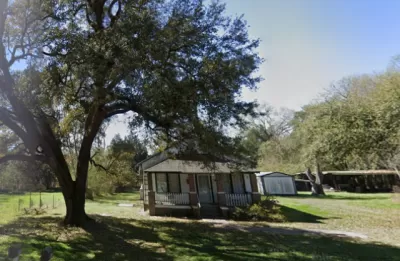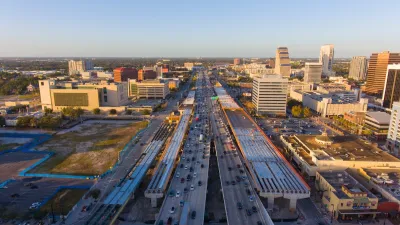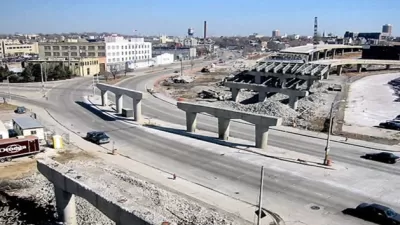Residents of a historic Black South Carolina town are being displaced by a road widening project.

Residents of Sandridge, South Carolina are being displaced by a road-building project, reports Sarah Sax in The Guardian. The project highlights the continuing impact of infrastructure projects on primarily Black and brown communities.
As Sax explains, “In January this year, the South Carolina chapter of the NAACP filed a Title VI complaint alleging that the state and the county violated the civil rights of Black residents in the design, planning and implementation of the Conway Perimeter Road.” The road project “would span four lanes and connect two existing highways and allegedly cut travel time for those headed to the nearby beach – and it would also mean destroying at least six homes in Sandridge.” The project would also cut through the community, making it harder for residents to pass from one side to the other.
Despite federal commitments to ‘reconnecting communities,’ projects like the Conway Perimeter Road are still being planned and implemented around the country, harming communities like Sandridge, where “Residents are mostly Black and elderly, and many are related to each other. It has historic value: one of the first Black-owned grocery stores in the state was opened in Sandridge.” One resident who was offered relocation compensation said the money for her three-bedroom home was just enough to cover a one-bedroom apartment nearby.
FULL STORY: Why is South Carolina still building roads on top of Black communities?

Alabama: Trump Terminates Settlements for Black Communities Harmed By Raw Sewage
Trump deemed the landmark civil rights agreement “illegal DEI and environmental justice policy.”

Planetizen Federal Action Tracker
A weekly monitor of how Trump’s orders and actions are impacting planners and planning in America.

The 120 Year Old Tiny Home Villages That Sheltered San Francisco’s Earthquake Refugees
More than a century ago, San Francisco mobilized to house thousands of residents displaced by the 1906 earthquake. Could their strategy offer a model for the present?

Opinion: California’s SB 79 Would Improve Housing Affordability and Transit Access
A proposed bill would legalize transit-oriented development statewide.

Record Temperatures Prompt Push for Environmental Justice Bills
Nevada legislators are proposing laws that would mandate heat mitigation measures to protect residents from the impacts of extreme heat.

Downtown Pittsburgh Set to Gain 1,300 New Housing Units
Pittsburgh’s office buildings, many of which date back to the early 20th century, are prime candidates for conversion to housing.
Urban Design for Planners 1: Software Tools
This six-course series explores essential urban design concepts using open source software and equips planners with the tools they need to participate fully in the urban design process.
Planning for Universal Design
Learn the tools for implementing Universal Design in planning regulations.
Clanton & Associates, Inc.
Jessamine County Fiscal Court
Institute for Housing and Urban Development Studies (IHS)
City of Grandview
Harvard GSD Executive Education
Toledo-Lucas County Plan Commissions
Salt Lake City
NYU Wagner Graduate School of Public Service





























